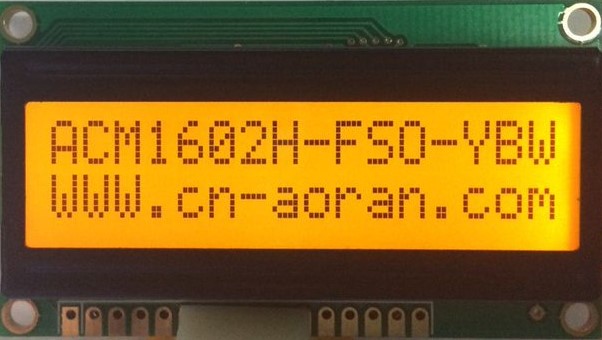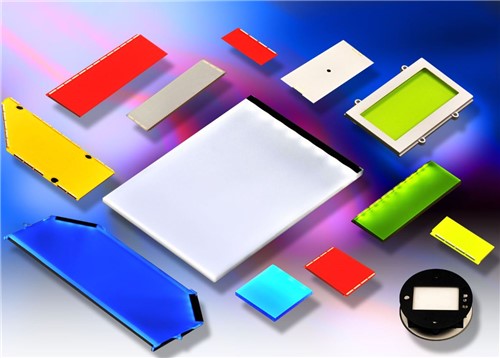What Exactly is a Character LCD?
Definition and Basic Function
A Character Liquid Crystal Display (LCD) is a type of display module designed to show text and symbols. It is a passive display technology, meaning it doesn’t emit light by itself. Instead, it uses a backlight or reflective surface to make the displayed characters visible.

In Detail
Character LCDs typically consist of a grid of characters, each formed by a matrix of dots, usually 5×7 or 5×8. This grid is divided into pre-defined character spaces, where each space can display a letter, number, or symbol. The most common format is the 16×2 display, which means it can show 16 characters in 2 lines. These displays use liquid crystal fluid sandwiched between two layers of glass. When an electric current passes through the liquid crystals, they rearrange to block or allow light to pass, forming characters on the screen.
Learn more about How to Make LCD Glass?
What are the Types of Character LCDs?
Character LCDs come in several types, each offering unique advantages for specific applications. TN (Twisted Nematic), STN (Super Twisted Nematic), and FSTN (Film-compensated Super Twisted Nematic) LCDs vary in technology, performance, and suitability, catering to a wide range of display needs from basic to more demanding applications.

TN (Twisted Nematic) LCDs
- TN LCDs are foundational in the LCD technology spectrum, offering a balance between cost-efficiency and functionality. They are characterized by their straightforward manufacturing process and are widely used in applications where high-speed display updates are not critical.
- Simple Structure: Facilitates easier and more cost-effective manufacturing processes.
- Fast Response Time: Suitable for applications requiring quick display updates.
- Low Power Consumption: Ideal for battery-powered devices due to their energy efficiency.
- Limitations: Narrower viewing angles and lower contrast ratios compared to more advanced technologies.

STN (Super Twisted Nematic) LCDs
- STN technology builds on TN LCDs by providing better viewing angles and improved contrast, making them more suitable for applications where readability from various angles is crucial. STN displays have found their niche in devices that require a good balance between performance and cost.
- Improved Viewing Angles: Significantly better than TN, allowing for easier reading from side angles.
- Enhanced Contrast: Offers clearer visibility in a variety of lighting conditions.
- Versatility: Adaptable to a broader range of applications, including more sophisticated industrial devices.
- Consideration: The response time and color shifting may not match the performance of more advanced displays.

FSTN (Film-compensated Super Twisted Nematic) LCDs
- FSTN displays are at the forefront of character LCD technology, providing superior readability and contrast. They incorporate a compensatory film that addresses the limitations of STN LCDs, such as poor viewing angles and low contrast. FSTN LCDs are preferred in high-end applications where display quality cannot be compromised.
- Optimal Contrast and Readability: The compensatory film greatly enhances both contrast and legibility.
- Wide Viewing Angles: Offers the best viewing angles in the character LCD category.
- High-Quality Display: Suited for demanding environments and applications where clarity is paramount.
- Energy Efficiency: Despite their advanced features, FSTN LCDs maintain efficient power usage.
- Consideration: While offering superior performance, they are more complex and may be costlier than TN and STN LCDs.
Learn more about How Thick is LCD Glass?
Why are Character LCDs Advantageous?
Benefits in Industrial and Commercial Applications
Character LCDs are highly advantageous for many reasons. They are energy-efficient, provide clear readability, and are cost-effective for mass production.

Energy Efficiency and Readability
These displays consume very little power, making them ideal for battery-powered or energy-sensitive applications. Their high contrast and sharpness ensure that the text is readable even in challenging lighting conditions, like direct sunlight.
Cost-Effectiveness
For industrial applications, where cost is a significant factor, character LCDs offer an economical solution without compromising on quality and durability.











